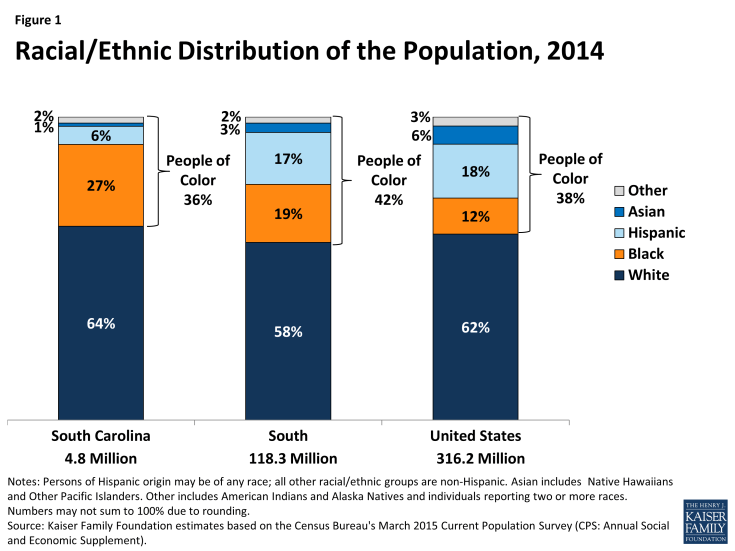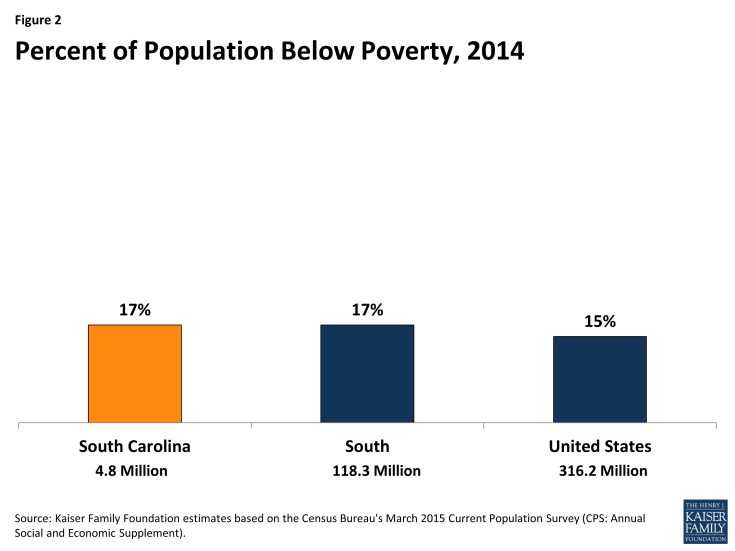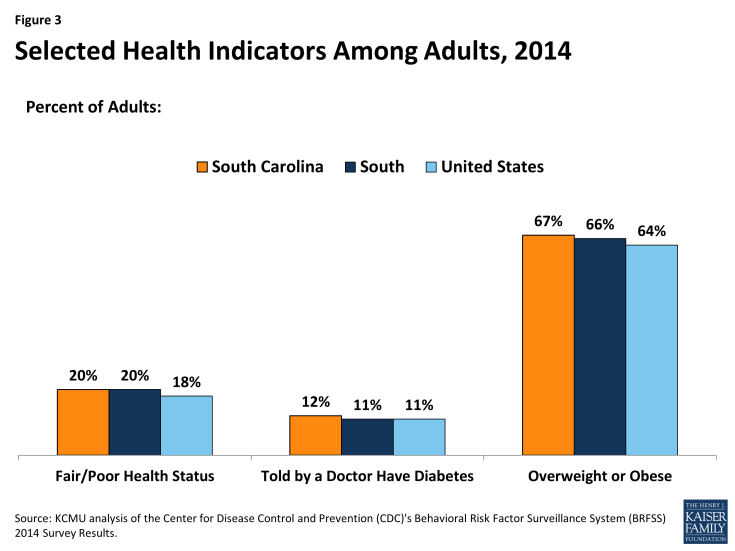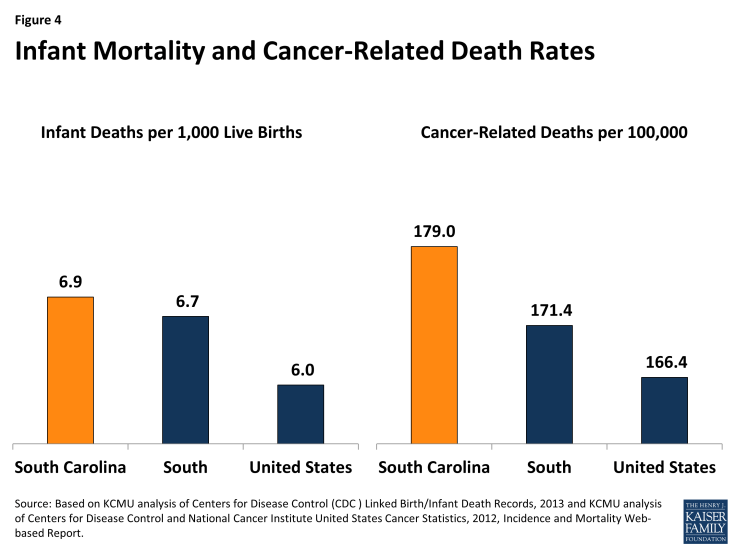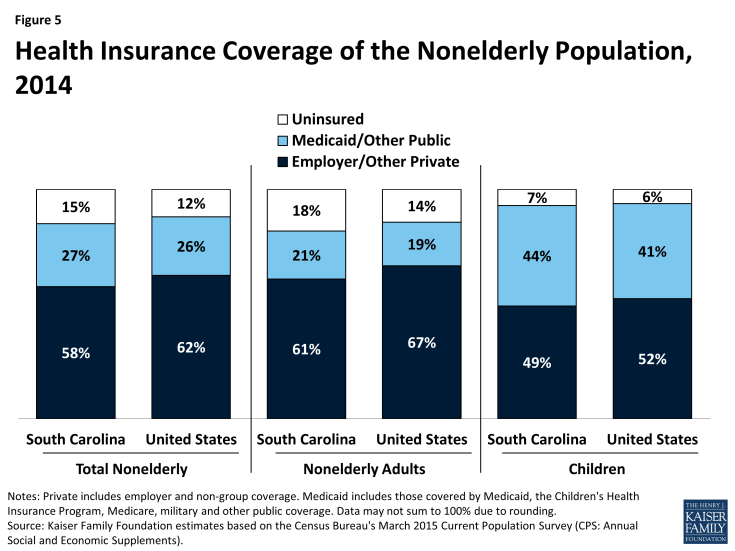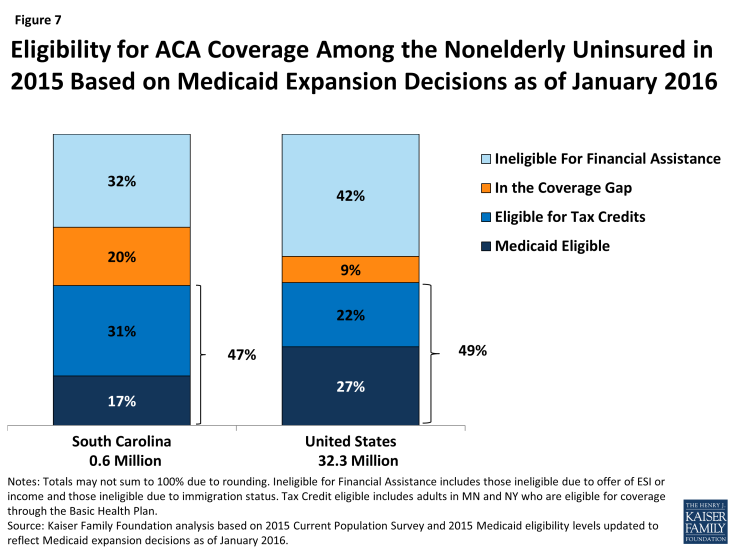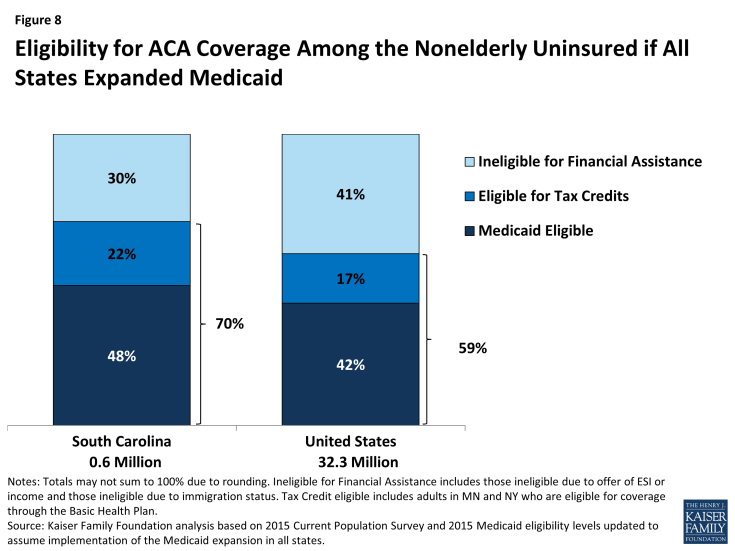Key Data on Health and Health Coverage in South Carolina
This fact sheet draws on data from “Health and Health Coverage in the South: A Data Update” to highlight findings for South Carolina. The findings show the current status of health and health coverage in the state and the potential coverage gains that may be achieved through the ACA.
Portrait of South Carolina Residents
As of 2014, nearly 4.8 million individuals lived in South Carolina. South Carolinians accounted for 4% of the total 118 million individuals living in the 17 states, including DC, that make up the American South.
People of color make up over one third (36%) of South Carolinians. Non-Hispanic Blacks account for a higher share of South Carolina residents compared to the rest of the South and the United States. Over one in four (27%) South Carolinians is Black compared to 19% of Southerners and 12% of the population nationwide (Figure 1).
Nearly one in five (17%) South Carolinians is poor. The poverty rate in South Carolina is consistent with the Southern region and slightly higher than the overall rate for the U.S. (17% vs. 15%) (Figure 2).
Health Needs in South Carolina
There are significant health needs among South Carolinians. In South Carolina, one in five (20%) adults reports fair or poor health status, over one in ten (12%) adults have been told by a doctor they have diabetes, and two-thirds (67%) of adults are overweight or obese (Figure 3). South Carolina also has high infant mortality and cancer death rates compared to rates for the United States (Figure 4).
Health Coverage in South Carolina
South Carolinians are more likely to be uninsured compared to the nationwide population. Consistent with the uninsured rate for the Southern region, 15% of nonelderly South Carolinians are uninsured, which is higher than the 12% uninsured rate for the nonelderly population nationwide. Uninsured rates are higher for nonelderly adults in South Carolina compared to children (18% vs. 7%). Consistent with adults in the Southern region, nonelderly adults in South Carolina have a higher uninsured rate compared to the overall rate for the United States (18% vs. 14%) (Figure 5).
Medicaid and CHIP eligibility levels in South Carolina are low compared to the national medians. South Carolina’s Medicaid/CHIP eligibility limit for children is 213% FPL compared to the national median of 255%, and its limit for pregnant women is 199% FPL compared to the national median limit of 205% FPL. Because the state has not adopted the ACA Medicaid expansion to adults, eligibility for parents remains at just 67% FPL, or about $13,500 for a family of three, and other adults without dependent children remain ineligible regardless of their income (Figure 6).
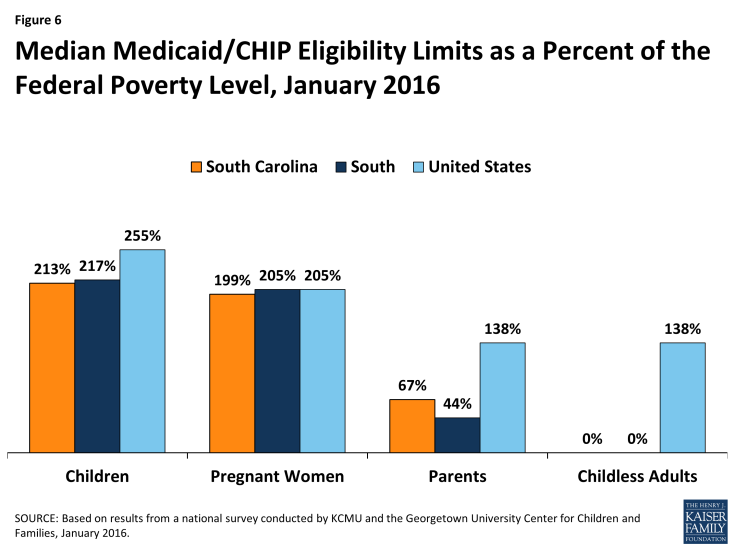
Figure 6: Median Medicaid/CHIP Eligibility Limits as a Percent of the Federal Poverty Level, January 2016
The ACA coverage expansions have the potential to extend health coverage to many uninsured South Carolinians, but because the state has not expanded Medicaid, many poor uninsured adults fall into a coverage gap. Among the 600,000 remaining nonelderly uninsured in South Carolina as of 2015, 17% are eligible for Medicaid and 31% are eligible for tax credit subsidies for Marketplace coverage. However, 20% or 123,000 fall into a coverage gap (Figure 7). These are poor adults who earn too much to qualify for Medicaid, but not enough to qualify for premium tax credits, which begin at 100% FPL. South Carolinians are more likely to fall into the coverage gap and less likely to be eligible for Medicaid compared to the uninsured nationwide. If South Carolina expanded Medicaid, the coverage gap would be eliminated and 48% of uninsured South Carolinians would be eligible for Medicaid coverage, increasing the total share of uninsured eligible for coverage to 70% (Figure 8).


